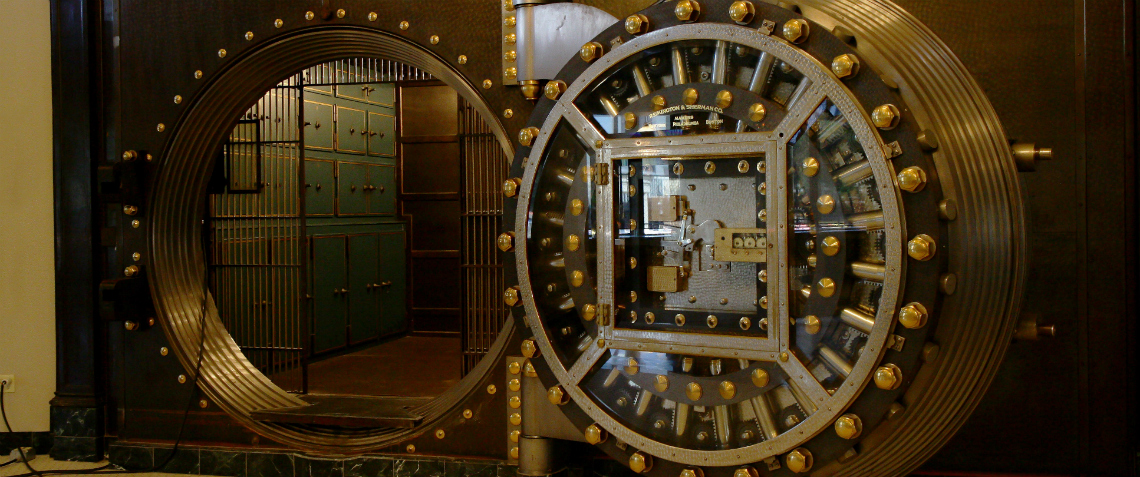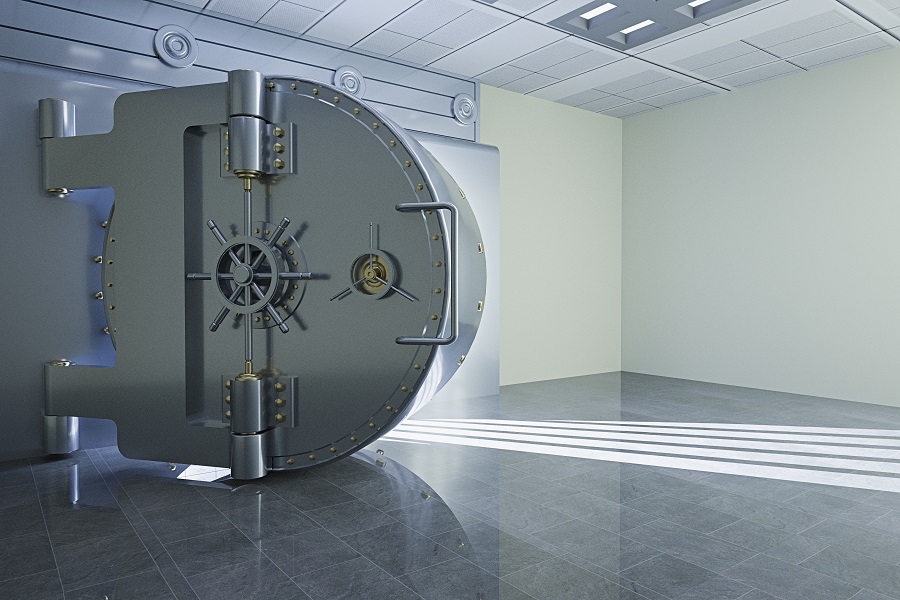What is a crypto asset vault? As the first one opens in Australia, we explain what it is, and the pros and cons of using one to store your crypto.
In Australia there are a few ways to store cryptocurrencies. Many crypto enthusiasts opt for an offline private wallet — a “cold wallet”. These are a great way to store your crypto, as long as you remember where you put it, and your recovery phrase. If you lose either of those, your crypto is pretty much lost.
Other people can store their crypto in an online wallet, or a “hot wallet.” Because these are online, they can fall prey to hacks.
Many other crypto enthusiasts keep their crypto on crypto exchanges. These however, can be hacked, or go bust like FTX.
There is another, newer way to store your crypto. It is in a crypto asset vault. But what is a crypto asset vault? And what are the advantages or disadvantages of using one?
What is a crypto asset vault?
A crypto asset vault is a place to store cryptocurrency — where it remains offline and potentially away from cyber threats. It is not on a physical device that could get lost or damaged, and the crypto that sits in it is insured.
Crypto asset vaults take inspiration from the world of gold storage. Gold storage vaults have a reputation for having some of the most robust security measures in the world, they are thought to be the gold standard of security and trust in the realm of financial security.
While storing gold in a gold vault can have certain benefits, there are also several negatives associated with this method. Renting a secure gold vault can be expensive. Physical gold stored in a vault might not be easily accessible. There is still a risk of theft, however it is small. If the vault’s operator encounters financial difficulties, goes bankrupt or burns to the ground, there might be challenges in retrieving your gold. The same risks can be seen in a crypto asset vault.
Crypto vault transparency
Transparency regarding where a customer’s crypto is stored is fundamental to how crypto vaults work. At FTX, the crypto exchange that collapsed in November of 2022, the company was diverting customer funds away from their exchanges without the customers’ knowledge or permission.
The likelihood of this happening with a crypto asset vault is lessened, as customers can see where their crypto is stored thanks to the immutable blockchain hash balance. Crypto funds can’t be taken out of the account without affecting the record on the blockchain.
Crypto asset vaults have existed for a few years, via the likes of Coinbase Custody, but they’ve generally only been available to large institutional investors. Now crypto asset vaults are available to everyday investors in Australia.

How does it work?
Crypto asset vaults offer security for stored crypto in four ways.
First, the only time your vault ever connects to the internet is when you’re making a deposit or withdrawal. Whenever you’re not accessing your vault, your vault remains completely offline, so cyber hackers or other criminals can’t get in and steal your funds.
Second, vaults will only let you withdraw your funds to your own wallet — a wallet that you specify is yours when you open your vault on day one. If someone tries to make a withdrawal to another wallet, the vault will block the withdrawal. The vault will only permit the withdrawal once you’ve confirmed it using your own biometrics. Using approved wallets and biometrics in this way helps stop attackers from transferring customer funds to their own wallets if they gain entry to a vault.
Third, every deposit and withdrawal only happens with the express signature of multiple people within the vault’s organisation. Those with the authority to approve a transfer or deposit use physical security devices, such as Yubikey, to sign off any activity.
By using multiple people to sign off on deposits and withdrawals, the vault holder isn’t placing their trust in just one individual — they’re placing their trust in multiple people who act as additional layers of security.
Crypto asset vault insurance
In a crypto asset vault, deposits are insured. Charlie Karaboga is the co-founder and CEO of crypto asset vault Block Earner.
“Our crypto insurance works in the exact same way your health or car insurance works. You pay a premium through your subscription to the crypto asset vault service, and your own personal crypto vault holdings are insured.”
Karaboga says that the insurance covers customers for adverse events such as cyberattacks, theft or Block Earner insolvency. “Insurance for cryptocurrency holdings is a relatively new service, and this is the first of its kind being offered in Australia to everyday retail investors.”

The cons
While keeping crypto assets in a crypto asset vault can provide enhanced security compared to leaving them on a regular exchange or in a software wallet, there are also some potential drawbacks and risks associated with this approach.
Access to crypto assets placed in a secure vault can be more restricted and might require additional steps for retrieval. If immediate access is needed, it might take some time to complete the necessary procedures to withdraw funds from the vault.
Also, most crypto asset vaults are third-party custodial services, which means you are entrusting your assets to a service provider. While reputable providers employ high-security measures, there is always a risk of the custodian being hacked, going out of business or engaging in fraudulent activities.
Also, some vault services may manage private keys on behalf of users. While this can add a layer of convenience, it also means that you do not have direct control over your private keys. If the vault provider loses or compromises the private keys, it could lead to a complete loss of your crypto assets.
Using a crypto asset vault service will likely come with certain setup, transaction and management fees. These costs could eat into your overall returns or make it less cost-effective for smaller holdings.

What would you use a crypto asset vault for?
A crypto asset vault provides different types of cold storage for different purposes. For example, investors can choose to keep a reserve of cryptocurrency offline, safe from potential attacks on exchanges, or the crypto vault itself can also hold the account holder’s credentials. This level of security can assist those thinking about long-term financial strategies or self-managed superannuation funds, for example.
Getting signed up
While it is early days in Australia for crypto vaults, you can actually sign up to a waiting list with Block Earner for the first crypto asset vault on the market made for Australians.
To set up your vault, you’ll need to open an account on the platform and go through verification checks using your email address and mobile number. You will also be subject to a biometric scan. Once your account is open, you can use it straight away.
How does a user transfer crypto from an exchange into a vault?
Most vaults don’t accept direct transfers from exchanges. If you’re currently storing your crypto in an exchange, you would first need to transfer your funds into your account with the company offering the vault.
From this account, you can then transfer your crypto to your vault in a matter of a few clicks. Once you’ve made your deposit, you’ll see the blockchain transaction hash showing your balance in the vault.
If at any point you wanted to withdraw funds from your vault, you would move them to your main account with the company and from there transfer your crypto to a third-party exchange or cold wallet — after passing biometric verification.

How does a user transfer crypto from a cold wallet and into a vault?
Most vaults also don’t currently accept direct transfers from cold wallets. If you’re currently storing your crypto in a cold wallet, you’ll first need to transfer your funds into your main account with the company. From there, you can then transfer your crypto to your vault.
Which cryptocurrencies can I store in a crypto asset vault?
Most vaults accept a range of cryptocurrencies. This will likely increase as more assets come into the market.
What does it cost to use the vault?
At the time of writing, digital assets stored in Block Earner incur a 0.3% annualised fee, which is charged daily.
Karaboga explains: “Block Earner charges an annual fee of 0.3% of your total vault holdings. So, for example, if you deposit 100 Ether in your vault, our annual fee for you would be 0.30 Ether (which is 0.3% of that 100 Ether), leaving you with a balance of 99.70 Ether at the end of one year. We charge on a daily basis, so effectively each day we’re charging a day’s worth of that 0.3% annual fee, which works out as 0.000082192% per day. So if you held 100 Ether in a vault with Block Earner, your daily fee would be 0.0082192 Ether.”

What is the best way to use the vault?
The best way to use a vault is as part of a medium- to long-term strategy for crypto investment. For example, self-managed super funds. In these scenarios you’re likely to want a high level of security to mitigate the risk of damage to, or loss or theft of, your funds. You might not want the complexity of managing the private keys to your personal wallet.
When your funds are in a vault, bear in mind that they’re not readily available for trading or selling. If you want to withdraw from your vault, you’ll have to transfer the funds back to your account with the platform first.
Karaboga said: “The crypto market has gone through a lot of volatility in recent months, from a downturn in the market to big players in the crypto ecosystem hammering trust in the market. We all saw what happened with FTX secretly diverting users’ crypto funds (including the funds of 30,000 Australians) away from their wallets, without their knowledge or permission.
“Not to mention when FTX filed for bankruptcy, hackers took the opportunity to steal US$323m (AU$493m) worth of crypto sitting in people’s online ‘hot’ wallets. Unlike FTX, Block Earner’s vault provides transparency into your holdings, so you know exactly where your assets are.”
Like any service in the crypto industry, do your own research and understand the pros and cons before moving forward.





